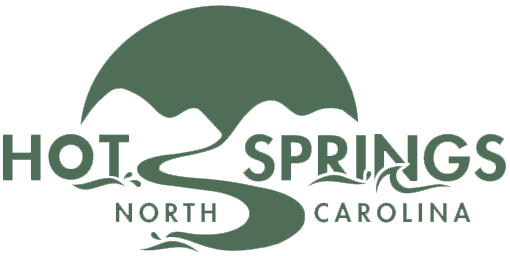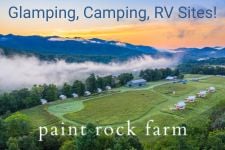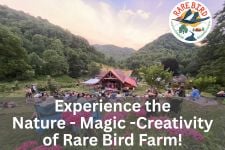A submission written by Jim Hickey
Having ruminated over the third section of this ongoing, unfolding array, readers will have learned how centrally Hot Springs is located in this aspect of the ‘new world order.’ Also appearing in the previous installment were the bare bones of legal, regulatory, and international treaty components of this often bewitching topic, underlying all of which were questions of managing not to drive this amazing plant, coevolved with Homo Sapiens, to the brink of extinction.
The annual permit lottery serves to ground this attempt to grapple with greedy agricultural practitioners. The Forest Service oversees this process, generally in July, garnering some fees to assist research into and support for wild ginseng and designating lotto winners as harvesting agents who receive copious advice and instruction from the Department of Agriculture’s USFS representatives hereabouts.
What ecological knowledge indicates about this wizard flora is possible to glean from various sources such as these Federal agencies, but why not ‘buy local’ in this realm? “The Ginseng King,” in local parlance, is Robert Eidus, who has for forty years operationalized sustainable and potent wild-simulated ginseng growth in Madison County.
He describes this herb as “A Shapeshifter.” “Ginseng is magical and mysterious. …. Most perennial herbs look the same each season of their growth, but not ginseng. The first three years it changes its appearance each successive year. …
(Furthermore), ginseng … reveals the age of each and every plant, because when the stem falls off in the fall it leaves a scar on the neck or curl. … Just count up the scars to determine the approximate age… . As a rule four prongs indicate a seven-year-old plant that is medicinally mature.”
Eidus’ initial “Awakening” to ‘sang’s’ magical mystery tour came in 1977. “(A)t a health conference in Hot Springs, North Carolina, I met Hawk Little John, a Cherokee medicine man, who discussed ginseng and goldenseal. His enthusiasm and respect for plants seeded in me an ever-deepening relationship to the green world.”
Whether these plants, as both most scientists and end-users believe, truly benefit humans or merely came to occupy a place in folklore for silly or random reasons—an odd notion indeed!—the allure of the plant is indisputable. Local property owners who have elected to cultivate the otherwise at-risk-of-extermination species know this very well: blogs and other communications among these erstwhile ginseng farmers state explicitly, “Don’t advertise” to anyone “that you’re growing,” or poachers will inevitably come a calling.
Thus, the most profane considerations and protocols enter the realm of the holy herbal healing balm of which Panax’s offshoots are exemplary members. The general frame of reference in which ginseng is sacred girdles the Earth, from the mountains of Northeast China and the Korean Peninsula to especially prolific production in the Southern Appalachians. Thus, in China, various incarnations of a ‘Red-Hat-Boy Playmate’ have entered the mythic aggregation.
In this story, parents or other overseers notice that an oppressed child or charge under their care seems more ebullient and happy than he should, given the strictures of his existence. Under duress, he confesses to playing regularly with a friendly child in a red cap, whom ma and pa, or the boss, know right away is ginseng. They follow the youngster and pick up the trail of his companion, kidnapping ginseng from his forest bed and plopping him into a boiling stew pot.
Through trickery and manipulation, the child or servant who’s just lost his friend maneuvers the adults out of the way, either liberating ginseng to escape together, or consuming the stew to become immortal along with the plant’s essence. Humanity is the beneficiary of this long ago legendary happenstance.
Ginseng also figures in many Cherokee tales and potions. At the end of the nineteenth century, early anthropologist James Mooney embedded himself with Qualla Reservation Cherokee for three years, engaging tribal backwoodsmen and elders to instruct him as to their folklore and medicine and such. Myths of the Cherokee resulted, a lengthy volume with over a dozen detailed references to what we now term Panax Quinquefolius.
Here is one such entry. “Ginseng, … used in native medical practice, is called âtalĭ-gûlĭ′, “the mountain climber,” but is addressed by priests as … Yûñwi Usdi′ga Ada′wehi′yu, “Little Man, Most Powerful Magician,” the Cherokee sacred term, like the Chinese name, having its origin from the frequent resemblance of the root…to the body of a man. The beliefs and ceremonies in connection with its gathering and preparation are very numerous. The doctor speaks constantly of it as of a sentient being, and it is believed to be able to make itself invisible to those unworthy to gather it.”
Bill Mitchell, the legendary herbal healer and Naturopathic Medical Doctor who often turned to indigenous teachings, posited that, basically without exception, every disease and disorder of the body, mind, or soul can find ameliorating assistance in plants that address, and sometimes out and out cure, whatever afflicts us. The fact that the Cherokee pharmacopoeia contains twenty-three specific prescriptions that use ginseng—ranging from a salve for tender breasts to tablets to reduce colic or indigestion—throws a definitely favorable light on Dr. Mitchell’s hypothesis.
Watch to find out more about the area’s herbalism community:
Ginseng in such a view represents a classic case of the synchronicity and coevolution that herbal practitioners and naturopaths propound as a universal law. In the event that either truth or utility favors such viewpoints, continuing our longstanding relations with ginseng amounts to a matter of thriving, if not survival. Wise counsel and sagacious practitioners would therefore unreservedly advise us to approach Panax and all its friends as stewards, whose purpose is husbanding, much more so than harvesting, the sweet goodness that our mountains produce.














